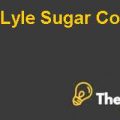
3.) What would be the potential strategic and financial synergies of ABN Amro– Barclays merger?
The strategic objectives of the company were very clear and transparent. This merger between ABN AMRO and Barclays would make the combined bank to achieve the second position in Europe and fifth position globally in terms of market capitalization. The large customer base and a huge presence was the attractiveness of deal for the companies. Not just that, ABN AMRO’s transaction banking franchise was already a market leader. So, combining with Barclays would make it the biggest transactional bank in the world because of the rapid growth in its international trade flows.
It was also expected to create a financial synergy. There were two basic components that were expected to increase as a result of this merger. The first was the cost saving which can be achieved through reduction of redundancies and overlapping. For example, if both the banks had branches in one area, then one of them could be closed and merged with other to save the renting cost, utility costs, and managerial staff costs (general staff can be utilized in the new combined place).
The other component was revenue benefit. Large banks that have greater presence as the costumers are attracted towards their charm which is because they can access the bank from more places, there is a sense of dignity and proud for being attached with such a bank and for other reasons as well. Thus, there were many potential strategic and financial synergies of an ABN AMROS–Barclays merger.
4.) Why is the consortium presenting what appears to be a higher bid than Barclays’? What strategic and financial gains are the consortium members expecting to realize from their acquisitions? Where are the synergies expected to be generated?
The case outlines two possible factors of consortium that present a higher bid than Barclays’. The first factor is that consortium is a group of banks that have diversified resources and different reasons for entering this merger. They can afford to combine chunks of their resources and place a higher bid as compared to a single entity that has to arrange all the resources at once. Along with that, different businesses are of different use to the members of the consortium thus; the chances of synergy are higher for the consortium. Every entity will use the division as a favour to itself with which it relates the most.
The second factor because of which the offer of the consortium is appearing to be a higher bid than Barclays’ is that consortium is paying a larger chunk in cash rather than stock. So with the turbulent environment and trembling share prices of banks; because of the financial crisis, the offer price will not deviate much. Whereas for the Barclays, that is paying 59% of the amount through its shares will be slightly undesirable when the share price falls down.
The members of the consortium have positive views about the merger. They agree to the terms of one another and the rules as well as division policies are quite clear among them. This is supposed to create a synergy in the environment because everyone has a clear idea as to what is that important division that they will like to focus on and there is no clash among them. Although they are paying more than the actual worth of the bank but there thinking that synergy will increase the revenues and decrease the cost; makes it an attractive investment.
5.) Analyse this deal from the perspective of Fortis. Is this a good deal for Fortis bank shareholders?
The CEO of Fortis quoted in The Banker in January 2008 that they understood each other very quickly and that there was no conflict between them over the division of assets. There is an enormous amount of respect among the members of the consortium.
In terms of valuation, it could be clearly seen that without the inclusion of synergy amount, this would never have been an attractive deal. The amount that Fortis is paying for this merger is €24 billion. Whereas the net present amount of the future expected cash flows from this merger is €16.8billion. However, if the amount of synergy is considered over perpetuity then it would become €24.6 billion.
This shows that in order to make this deal appear good, the bank will have to realize almost the full amount of synergy at the calculated cost of capital....................................
This is just a sample partial case solution. Please place the order on the website to order your own originally done case solution.












